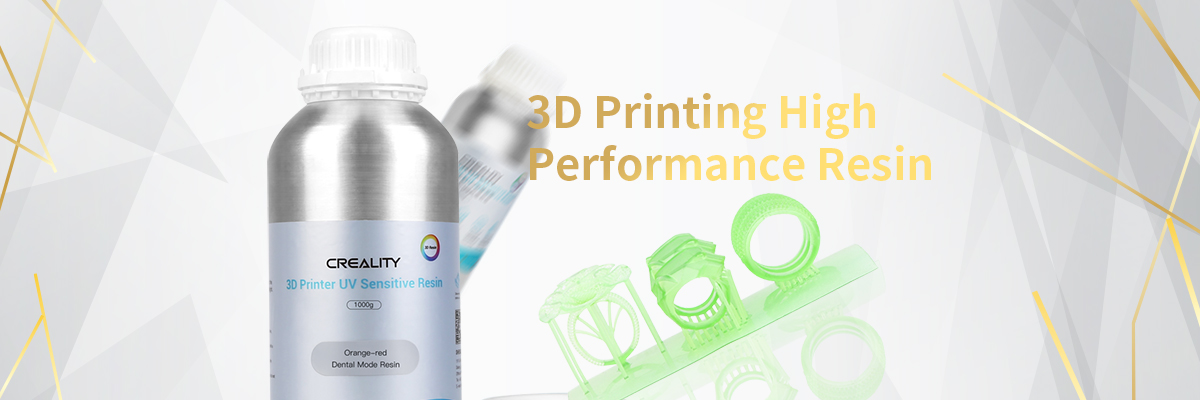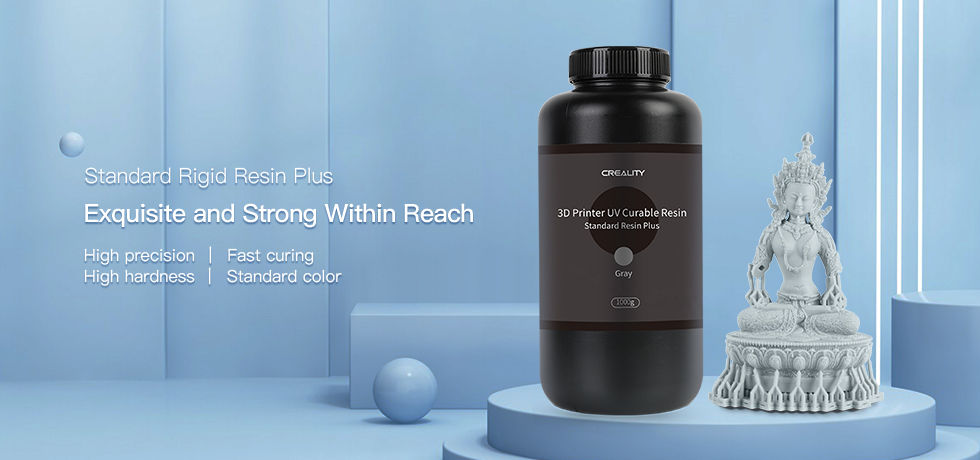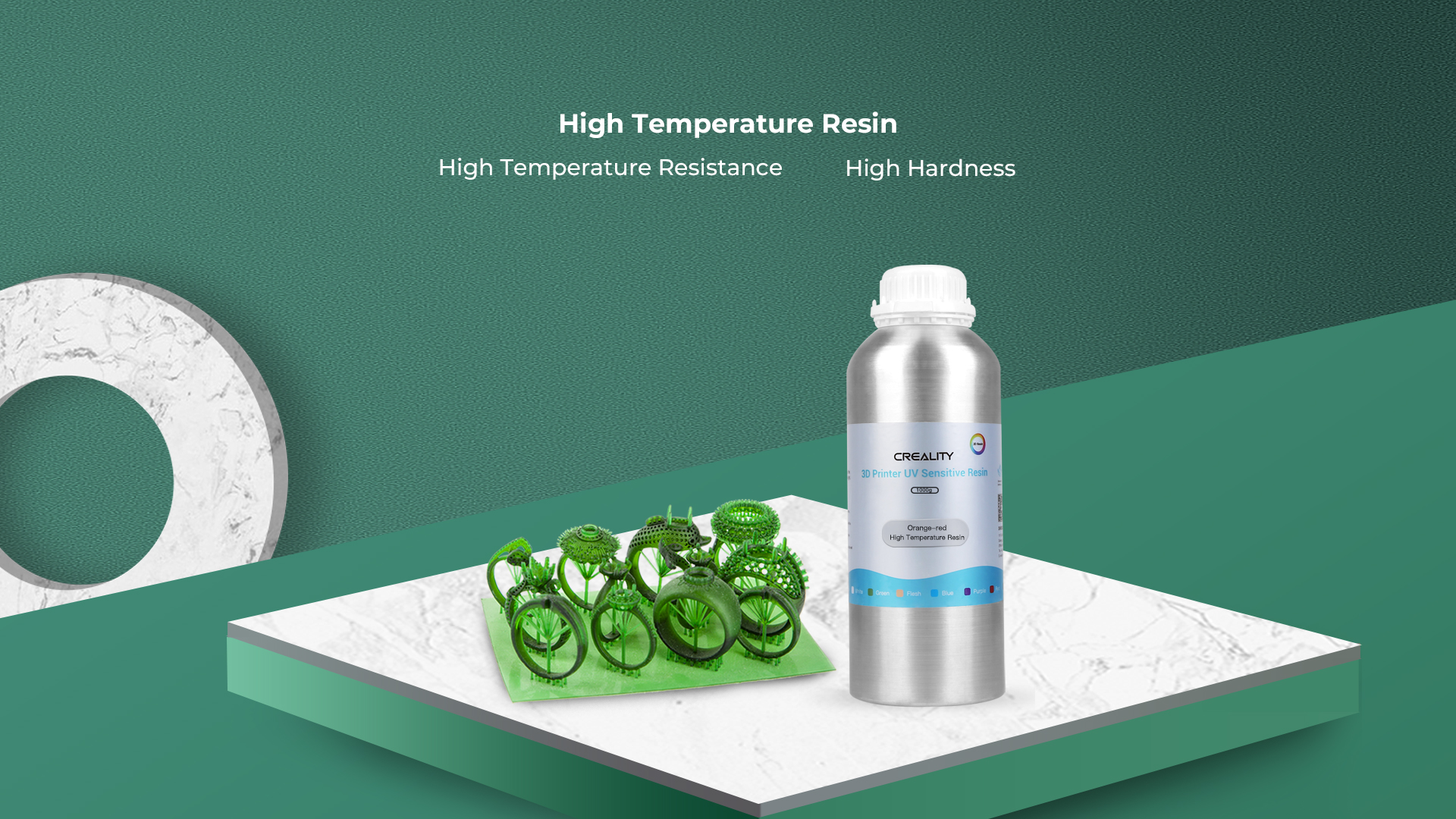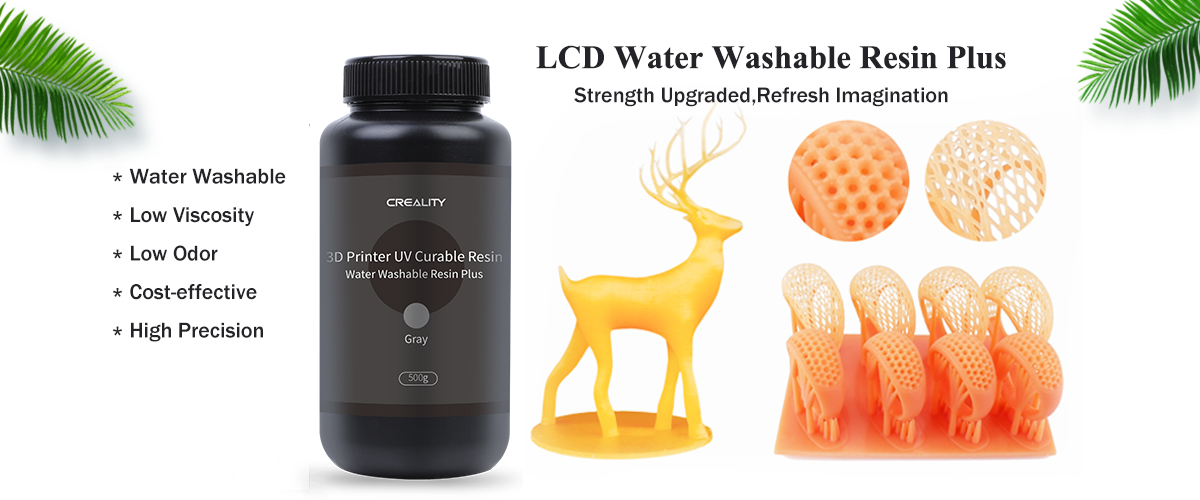What types of resin are there for 3D printing?
Resin printing technology originated in the 1980s. Chuck Hull, the founder of U.S.-based 3D Systems, invented the first consumer desktop resin printer in 1986, giving birth to Stereo Lithography (SLA) 3D printing technology.
Over the past few decades, resin printing has continued to evolve and is now used in industries as diverse as prototyping, medicine, art design and manufacturing. Due to the improvement of technology and increasing market needs, resin printers have become an essential tool in the 3D printing industry. Today, we will explore what resin is, different types and characteristics of resin, and how to choose a suitable resin 3D printer, among other things.
What is Resin?
Resin, in the context of 3D printing, refers to polymers that cure when exposed to ultraviolet (UV) light. These liquid substances are used as raw materials for various 3D printing applications, enabling the creation of intricate objects layer by layer.
3D printing resins come in a variety of formulations tailored to specific applications and technologies, such as stereo lithography (SLA), digital light processing (DLP), and liquid crystal display (LCD) 3D printing. They offer properties such as high resolution, fast curing, transparency and flexibility. The choice of resin is critical because it directly affects the final properties of the printed object. Understanding the different characteristics and types of resins is essential to achieving optimal results in resin-based 3D printing.
Let's explore the different types of resins commonly used for 3D printing.
Different Types of Resin for 3D Printing:
For resin 3D printing, you can choose to use ABS Like Resin, Elastic Resin, High-Temperature resistance Resin, Water Washable Resin, or Standard Rigid Resin, each with its own set of unique properties and specific use cases.
1. Standard Rigid Resin
Creality's Standard Rigid LCD UV Resin in a 1kg package offers an affordable and cost-effective solution ideal for beginners in resin 3D printing. Compatible with 90% of LCD resin printers, particularly Creality models, it ensures broad accessibility. This resin boasts high precision, delivering detailed and accurate prints. With a focus on strength and toughness, it is suitable for a variety of applications. The material undergoes stringent selection, resulting in low odor during the printing process. Elevate your 3D printing experience with a resin that combines affordability, compatibility, precision, strength, and a user-friendly low-odor profile.
The standard rigid resin has 4 Benefits: good resin fluidity, rigidity and toughness, fast printing speed, and multiple color options.
Good fluidity: This resin has good fluidity which can quickly infiltrate the model and then solidify. It improves the success rate by reducing resin release and adhesion. In addition, it helps clean the machine and model easier.
Rigidity and toughness: High hardness and toughness to resist impact.
High-speed Printing: The resin improves the printing speed while ensuring the strength of the model and non-excessive shrink while increasing the printing speed. It can also shorten the curing time and improve the printing efficiency of the LCD machine as much as possible, with a good appearance and outperforming practicability.
Multiple color options: up to 8 colors, to meet customers' multiple color requirements, skin color, white, black, gray, transparent blue, transparent red, transparent green, transparent color.
Rigid resin can be used for 3D printing of cartoon resin kits, craft decoration, educational teaching, art creation, and architectural models.
2. Elastic Resin
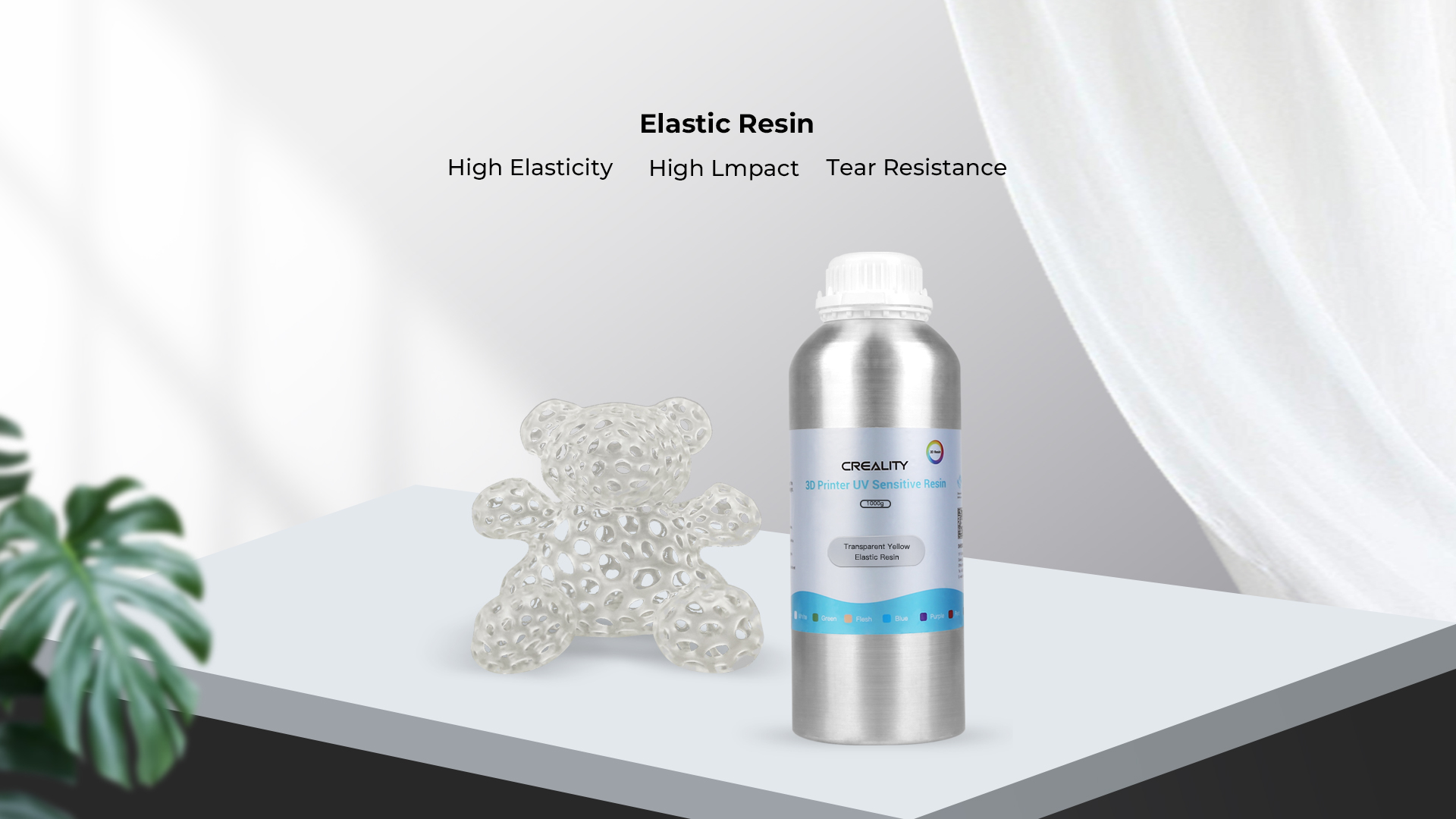
The elastic resin boasts excellent molding and impact resistance, along with a short curing time, ensuring no deformation during the molding process. The finished product exhibits outstanding elasticity, a smooth surface, and high precision. With physical properties akin to rubber, printed parts can be folded numerous times without breaking, making it ideal for creating soft objects. This resin is compatible with most LCD/DLP printers.
Its applications span various industries, including jewelry, dentistry, watches, glasses, teaching, research, toy design, handicraft design, and industrial parts design. The versatility of elastic resin makes it a valuable choice for those seeking resilience, precision, and flexibility in their 3D printing projects.
3. High-Temperature Resistance Resin
High temperature resistant resin refers to a type of polymeric material designed to withstand elevated temperatures without significant degradation or loss of structural integrity. These resins are formulated to maintain their mechanical properties, stability, and form even when exposed to temperatures well above what standard resins can withstand.
Key features of high-temperature resistant resin:
Thermal Stability: excellent thermal stability, allowing them to withstand exposure to high temperatures for extended periods without undergoing significant changes in their properties.
Mechanical Strength: High-temperature resistant resins retain their mechanical strength and integrity under heat, making them suitable for applications where both thermal and structural performance are crucial.
Chemical Resistance: Many high-temperature resistant resins also possess good chemical resistance, protecting them from the potentially corrosive effects of certain chemicals or environments.
It is suitable for applications in high-temperature environment, such as automotive, aerospace industry, electronics, and other heat-generating parts. Additionally, it finds extensive use in 3D printing technologies, specifically for crafting functional prototypes, tools, and parts requiring resilience in the face of heightened temperatures.
Our high-temperature resistance resin can withstand the high temperature of 220 degrees and molding surface hardness up to 85-88D.
4. Water Washable Resin
Washable resin is water washable, has low viscosity, and low odor. Key features of Creality LCD Washable Resin Plus:
Water Solubility: Washable resins are formulated to be soluble in water, making them easy to clean without the need for harsh or specialized cleaning agents.
Environmentally Friendly: These resins are often considered more environmentally friendly than those that require chemical solvents for cleaning because water is a more benign substance.
User-Friendly: Washable resins are convenient for users who prefer an easier and safer post-processing experience by eliminating the need to handle potentially toxic cleaning solutions.
Compared to other resins, Creality water-washable resin has a 40% increase in flexural strength (45-75Mpa) and a 20% increase in tensile strength (30-46Mpa). It provides extended dimensional stability even when submerged in water. The printed models feature precise details, smooth surfaces and improved impact resistance, demonstrating superior strength, quality and durability.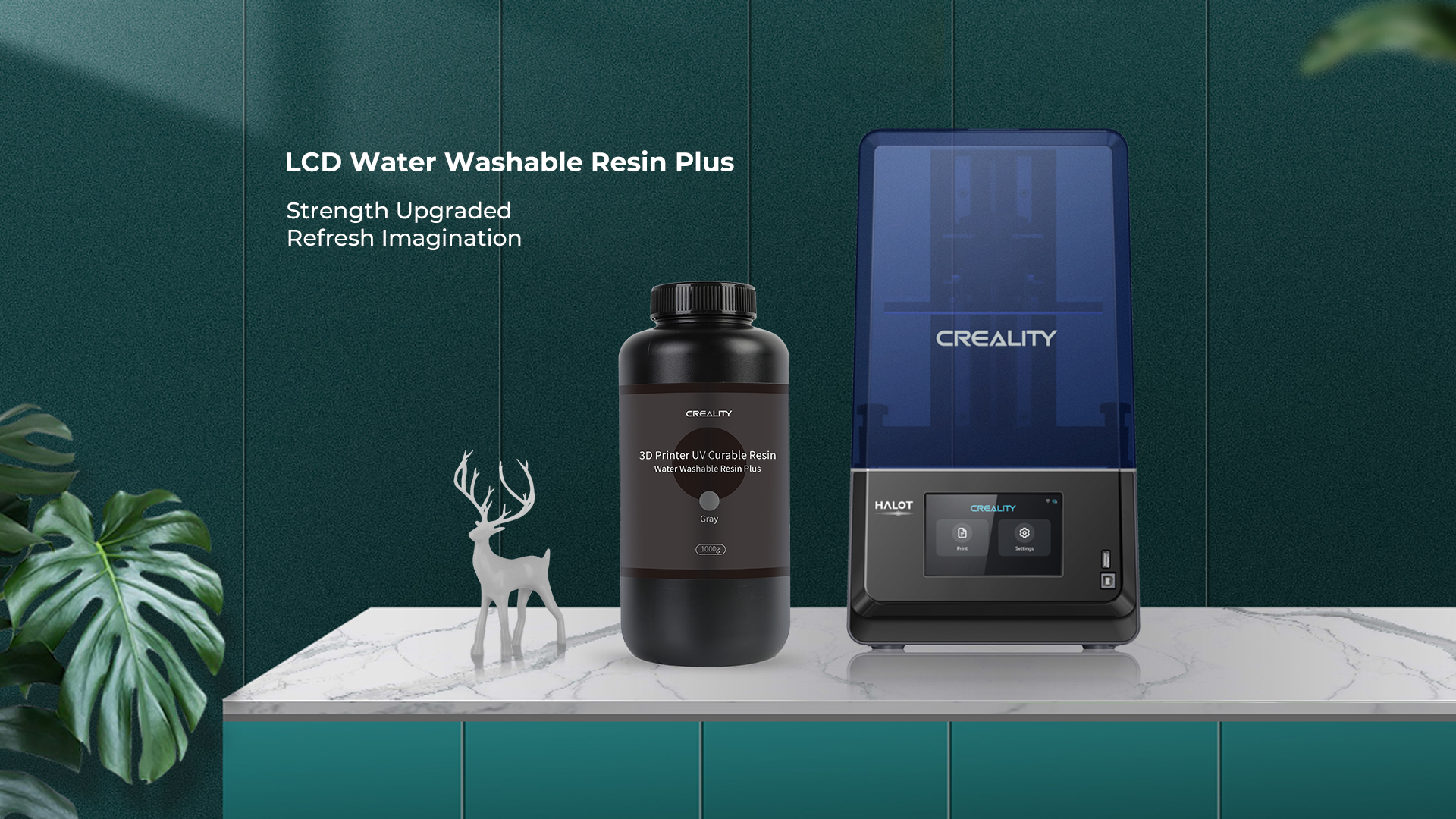
Application area: General models, Garage Kit, Dentistry, Education and research, Toy design, Handicrafts, Industrial parts.
5. ABS Like Resin
ABS resin is the acrylonitrile butadiene styrene copolymer, which is an acronym for Acrylonitrile Butadiene Styrene. It is a thermoplastic polymer with high strength, good toughness, and easy processing. ABS resin is the most widely used polymer, which combines the various properties of PS, SAN, and BS, and has excellent mechanical properties of toughness, hardness, and rigidity.
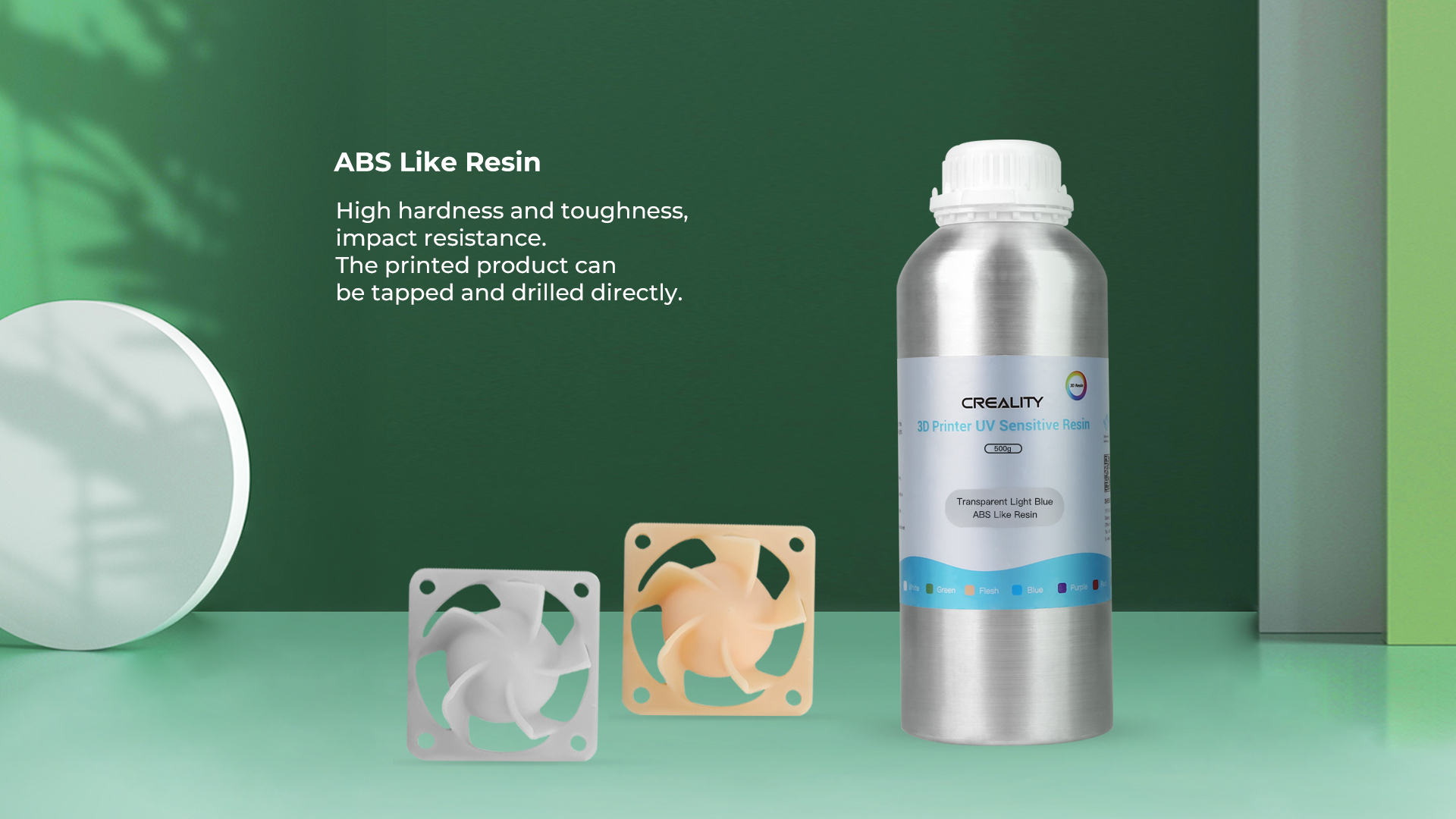
It is both rigid and tough, with strong impact resistance, making the 3D printed model have both strength and flexibility, excellent molding, and impact resistance, good surface gloss, and easy to paint coloring.
ABS resin is suitable for jewelry, dentistry, watches, glasses, teaching, and research, handicraft design, industrial parts design, etc.
What Resin 3D Printer should I buy
Creality resin 3D printers for high-precision, detailed prints, including models such as the HALOT MAGE and HALOT MAGE Pro, which feature advanced technologies such as 8K monochrome LCDs for exceptional resolution.
HALOT-MAGE PRO 8K Resin 3D Printer

The Creality HALOT-MAGE PRO revolutionizes printing with a groundbreaking speed of 170mm/h—3 to 5 times faster than competitors without compromising quality. Featuring a professional 10.3" 8K LCD screen, it achieves intricate prints with a 29.7 µm XY resolution. The smart resin pump automates filling and withdrawal, while the integrated air purifier absorbs odors. Integral Light 3.0 ensures uniform lighting, creating pristine surfaces. Enjoy remote control via Creality Cloud, HALOT BOX, or USB drive. What's more, you can enjoy a free one-year Creality Cloud Premium subscription for added perks, only until December 31, 2023. Get to know the resin 3d printing setting to make better use of it.
HALOT-MAGE PRO vs. HALOT-MAGE
| Model | HALOT-MAGE | HALOT-MAGE PRO |
| Build Volume (mm) | 228x128x230 | 228x128x230 |
| LCD Size (inch) | 10.3 | 10.3 |
| LCD Resolution | 7680x4320 | 7680x4320 |
| XY Resolution (μm) | 29.7 | 29.7 |
| Light Intensity (μW/cm²) | 5000±10% | 8000±10% |
| Light Uniformity (%) | >75% | >90% |
| Light Source | Integral Light Source 3.0 | Integral Light Source 3.0 |
| Build Volume (cm³) | 6712 | 6712 |
| LCD Contrast Ratio | - | - |
| Printing Speed (mm/h) | 60 | 170 |
| Layer Height (mm) | 0.05-0.15 | 0.05-0.15 |
| Computer OS | Windows/Mac | Windows/Mac |
| File Formats | STL/OBJ | STL/OBJ |
| File Transfer | USB Drive | USB drive/RJ45 cable/WiFi/Creality Cloud |
| Product Dimensions (mm) | 333x270x608 | 333x270x608 |
| Package Dimensions (mm) | 420x350x675 | 420x350x675 |
| Net Weight (kg) | 12 | 13 |
| Gross Weight (kg) | 15 | 15.8 |
| Slicing Software | HALOT BOX/ CHITUBOX/ LycheeSlicer | HALOT BOX/ CHITUBOX/ LycheeSlicer |
| UI Languages | 2 languages English, Simplified Chinese, |
14 languages: English, Simplified Chinese, Traditional Chinese, French, German, Italian, Spanish, Portuguese, Japanese, Korean, Dutch, Polish, Russian, Turkish |
Creality Halot Series Resin Printers Parameter Comparison
Notes and Tips for Resin Use
1. Shakeevenly for 1-2 minutes before use to avoid possible sedimentation of resin components.
2. Thisis disposable and Can't be used repeatedly.
3. Theresin is liquid and has aslight odor. Please wear a mask when using it.
4. If contacted with clothes by accident, please change it immediately and wash your skin and clothing immediately with soap and water.
5. Relocate and hospitalize immediately if inhaled by accident.
6. Wash your skin with soap or hospitalize if touching the skin by accident.
7. If accidentally touching your eyes, open your eyelids and rinse with soapy water for about 20 minutes and hospitalize immediately.
8. If accidentally inhaled or swallowed, do not induce vomiting, stay calm and hospitalizein time.
9. Formodels with supports, it is recommended to remove most of the supports before curing, and then remove the remaining supports after curing.
10. Disposal of waste is in accordance with local environmental regulations.
11. Storage: Indoor storage in a dry ventilatedplace free from any corrosive gas, sun exposure, or moisture. 1-yearshelf life.
Frequently Asked Questions about Resin
1. How to Get Resin Off Hands?
To remove resin from hands, use acetone or isopropyl alcohol. Wash hands thoroughly with soap and water after using the solvent. Wear gloves next time to prevent direct contact.
2. Is Resin Toxic?
Some resins can be toxic if mishandled. Always follow safety guidelines and use in well-ventilated areas. Wear appropriate protective gear like gloves and masks.
3. Is Resin Plastic?
Resin and plastic are different materials. Resin is a liquid polymer, while plastic is a solid polymer. Resin becomes plastic-like after curing.
4. How Long to Cure Resin Prints?
Curing times vary. UV resin prints may take a few minutes under UV light, while other resins might require hours or more. Follow the manufacturer's recommendations. For more details you can read: How Long to Cure Resin Prints: What You Need to Know
5. What Is Cured Resin?
Cured resin is the solid, hardened form of liquid resin after the curing process. It results in a durable and stable material suitable for various applications.
6. How to Clean Resin Cups?
Clean resin cups with isopropyl alcohol or acetone. Wipe away residue with a lint-free cloth. Dispose of cleaning materials properly to avoid environmental impact.
7. How to Color Resin?
Color resin using pigments or dyes made for resin. Mix the coloring agent thoroughly into the resin before curing. Experiment with different ratios for desired hues and effects.







































































































